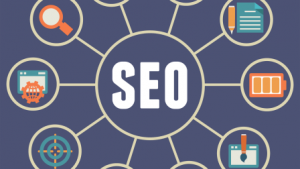Believe it or not, there are no constants in the digital world. Customers always demand change, that is why entrepreneurs and business owners create new business strategies and develop advanced products to meet their customers’ requirements. Still many companies strictly follow the traditional model of web development that takes months and sometimes even years to launch a final, perfect website.
Trust me, there is no shortcut to develop a website that generates continuous sales, drives growth, customer retention and more conversions. It can only be achieved after months of efforts you put into design and development, start receiving real feedback from users and build a better understanding how customers actually interact with your website.
Instead of developing a website until it is perfectly done, business owners should invest time, effort and resources in the iterative web design process to create a website that delivers true value, easy accessibility and great satisfaction to your clients. Here are a few reasons why every business owner should invest in an iterative website design.
Build Products Faster
When it comes to a traditional model of web development, a project manager discusses the requirements with the client and then convey the idea to the designer. The web designer creates some mocks up, and the final design passes to the development process. During this entire process, the client’s market or requirement has changed, and the mock up they required months ago, won’t work now. The designer makes required changes and the cycle continues until the website is ready to launch.
Mostly, these long and repetitive efforts result in the clients miss their chance to reach their prospects. Chances are: their competitors might win the race, customers might have lost their interest in the particular product, or the company might have just lost its interest. Though, there is a fully functional website at the end, but at this stage, it is unable to give your client and company any advantage.
An iterative design process brings web designers, web developers, project manager and marketers together on a single platform to focus on a single final product. Instead of waiting for every team member to create every feature the client needs, the whole team refines the client vision into visually appealing and fully functional design. This minimum viable product (MVP) has the power to deliver maximum functional features to connect with users and provide real time feedback.
Encouraging the iterative UX design process can minimize the chances of following the faulty, bogus design proposition or developing features that don’t provide value to the product. However, releasing new features with advanced functionality every few weeks, instead of every eight months can create a frequent flow of information to help authenticate the ideas and build improved digital platforms.
Keep Customer Feedback in Mind
Until a website launches to market, most of the design and development choices are simply a theory. Obviously, A/B testing and research can help during the development process, but there is no alternate of putting your products into the hands of real users. What they actually experience while using your product is something that can help you improve your web design.
An MVP is a great platform to learn and improve your web design, and there is not better substitute of actionable data than your real users. When you have ongoing customer feedback, your web design agency can deliver improved user experience, more advanced features with successive release. Instead of launching a business website after months of development and ending up with a bad design, iterative design process and web development make it better, economical and quicker to change the direction and follow a promising line of development.
Improved and Satisfactory Results for Customers
Working with the right client, iterative web design practice offers a lot of freedom to your web design team. Though it can be challenging enough to find the client that gives freedom and is flexible enough to adjust to the continuous, rapid pace of shift. There are many businesses that stick to their long-term plans and quarterly marketing strategies and if strategy shifts constantly because of customer feedback, they are not ready for action.
Iterative UX design process offers better outcomes for both client and agency. Clients receive new websites or SaaS products that are in a constant state of betterment, offering improved user experience and functionality to their customers. Instead of undergoing a website redesign every three or five years, businesses should focus on incrementally improving their user experience, backed by research and customer data.
When any company shifts to an iterative design and development process, it immediately sees a rapid increase in customer satisfaction, improved functionality, accessibility and user experience. This will help businesses in customer retention and high conversion ratio. By focusing directly on customers’ requirements and developing only features or products that user demands, almost every type and size of business can apply iterative design practices to achieve better and positive results.
Digital & Social Articles on Business 2 Community(35)
Report Post




